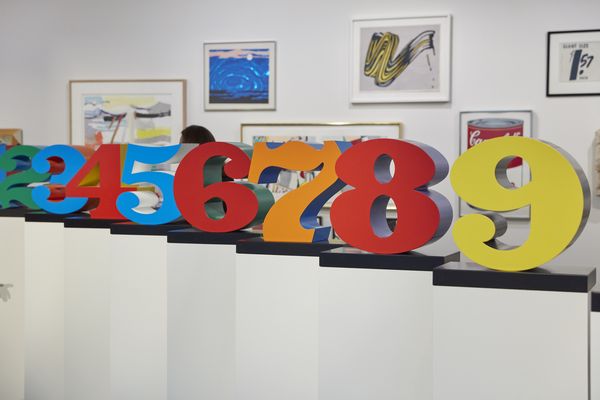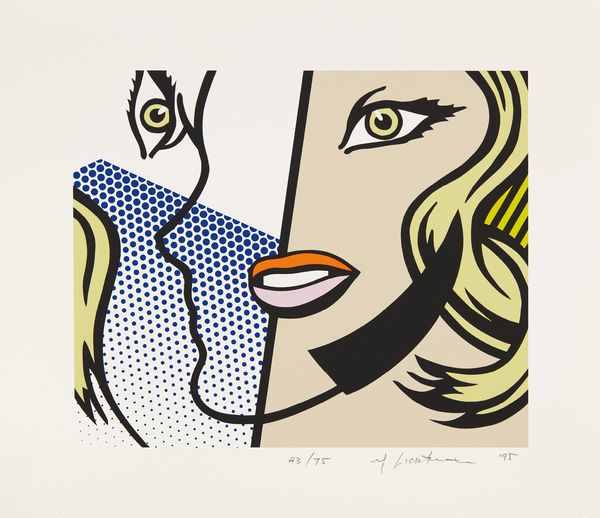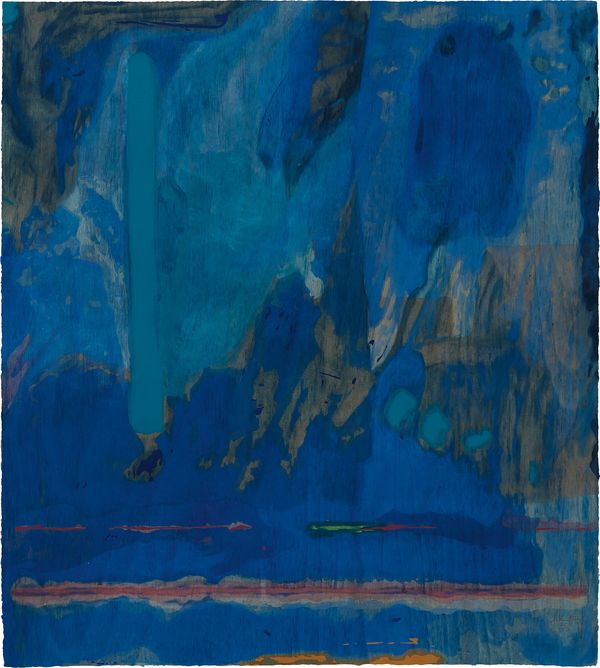Cary Leibowitz, Worldwide Co-Head of Editions
Andy Warhol Tomato Soup, from Campbell's Soup I, 1968
Estimate $50,000 - 70,000
Writing about something in this sale is fun — it's hard to focus on one work and my favorites change every few hours. But right here and now, it seems like such an easy decision: Tomato Soup! Of course, tomato soup. It's where everything has really started in the last 50 years. It grabbed the torch Mister Duchamp's urinal passed along.
Andy Warhol created two portfolios of Campbells prints with ten different flavors of prints per set. There are many paintings on canvas out there too, although, in those, he played with the color combos more—pinks, browns, yellows—and, of course, they're about 100 times the price of a print edition.
I love the maturity of this print. It stands there upright, at attention. No blinking; no fancy drips or perspectives; no shocking colors or shadows. This tomato soup print feels very serious, almost as if it's guarding the other works on the wall—the oldest kid that is left to babysit the others. —Cary Leibowitz
Kelly Troester, Worldwide Co-Head of Editions
Joan Miró Série noire et rouge (Black and Red Series), 1938
Estimate $20,000 - 30,000
Pablo Picasso's Guernica was painted the year before Joan Miró's Série noire et rouge, which was shortly followed by his stunning Constellations series in January 1940 — all while dictator Francisco Franco continued to spread fear and violence across Spain, influencing much of the art of this time. You immediately recognize the work's classic Surrealist 'look', with the spindly, odd figures and expanding sun and stars comprising a landscape; but you come back to notice the menacing head with horns (Franco?) in the lower left corner terrorizing a family of three figures to his right. So much drama rendered in a six-by-ten inch frame!
Miró's earliest prints in the late 1930s were born from a pre-occupation with etching that originated in 1938. It led him to this lush, rich series of etchings with drypoint, created by drawing in two colors—black and red—on two copper plates and printing eight different combinations in small editions of 30. The painter and skilled engraver Louis Marcoussis taught Miró how to print these small jewels of intaglio virtuosity, so if you love a rich impression or a strong platemark even more, the devil is in all of these details. —Kelly Troester
Kip Eischen, Specialist
Roy Lichtenstein Untitled Head, 1995
Estimate $10,000 - 15,000
This blonde from 1995 is a total babe, especially for those of us with a taste for abstraction. She is Picasso's Jacqueline for the Soap-Opera era. We also get to peek at all the most exciting tropes in Roy Lichtenstein's printmaking, albeit with some twists: benday dots fade into this ethereal gradient; the flaxen hair's loose "brushwork" evokes its artist's jabs at Abstract Expressionism; bands of black and yellow recall the artist's masterful work with woodcut. Like that of Picasso's great, often-abstracted love, this figure's impact is so strong that not one view of her could cut it; she confronts us directly while also permitting a glimpse in profile.
One of my favorite stories from working at Gemini G.E.L. in Los Angeles was the great lengths Roy Lichtenstein went in order to watch soap operas while making prints such as this one. I'm gobsmacked! —Kip Eischen
Jason Osborne, Cataloguer
Sam Gilliam I chi; Two; Tre; and Cuatro, 1994
Estimate $12,000 - 18,000
I love these four monoprints by Sam Gilliam. I have always thought of monoprints as the rebels of the print world. Ichi; Two; Tre; and Cuatro each embrace this spirit through their use of varied processes and mediums, i.e. screenprinting, embossing, stitching and acrylic, all on handmade paper. Their tactility, materiality, full sheets and overall compositions suggest painting—another medium in which Gilliam is well-known for pushing boundaries—as much as printmaking.
They all feel nuanced and slightly resistant to the printmaking process while maintaining their print status. They're insiders and outsiders at the same time...true rebels. —Jason Osborne
Dakota Peschel, Administrator
Helen Frankenthaler Tales of Genji III, 1998
Estimate $40,000 - 60,000
...Blue is meditation, heartbreak, sadness, freedom, peace, clarity, knowledge, wisdom. Blue is the color of the fifth chakra — the throat chakra — representing, within the body, creativity, truth, communication and self-expression. Frankenthaler's exceptional woodcut and pochoir, Tales of Genji III from 1998, is in deep dialogue with many emotional associations and philosophical concepts tied to blue.
The print itself is arduous, consisting of 18 different woodblocks and a whopping 53 colors. You would never know because it comes off so cool and effortless! The totality of this blue is striking and the meditation on color painstaking and exact. This blue is all-encompassing and embodies Frankenthaler's keen interest in color and feeling. In person, the print is affecting—the presence of one's body and mood crucial to the experience. The blue is vibrant and the language of the forms multifaceted. There is a natural ease and wonder to the blues, but that is not to say it is without seriousness and gravitas. It is ambiguous in a good way. This print is a true gem. —Dakota Peschel





